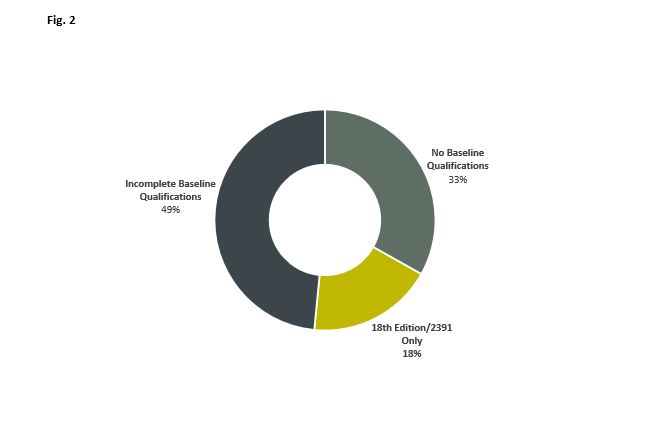
https://sparksafeltp.co.uk/news-item/the-industrys-semi-skilled-dilemma/
Categorising workers according to standards is an established and appropriate action of the UK electrical contracting industry. By doing so, Client organisations can determine how well contractors match the proportion of fully qualified electrical workers to all other workers with their project requirements.
A category of electrical workers comprising the unqualified or underqualified is employed by the UK industry in commercial and industrial projects.
We have assigned the licence term Restricted Electrical Worker (REW) to this category of workers. The REW licence provides evidence to the Client that the electrical worker is not fully qualified. No other purpose or limitation to work activity is to be inferred as tasking such workers is a matter in the first instance for employers.
The SparkSafe REW licence fulfils two objectives –
SparkSafe recently carried out an analysis of circa 1500 licenced electrical workers operating in the commercial and industrial sector of the UK electrical contracting industry. The analysis of licence types is set out in Fig. 1 below.

The context of this sample should be considered in light of the fact that during the period 32% of REW’s progressed to become QE licence holders. We attribute this movement to a new Client induced driver. This arises by virtue of the insight (via the WCR) provided by SparkSafe LtP that consequently incentivises REW workers towards attaining QE status.
The progression of REW’s to QE licence status is likely to have produced a higher proportion of QE’s than what might otherwise be perceived by many on the ground in the present industry. It is likely that the proportionality of SparkSafe designated worker types will be different across the UK industry, i.e., lower numbers of QE’s and AE’s and higher numbers of REW’s.
There are a number of reasons why the industry employs REW licence holders –
Further analysis regarding the qualifications held by the 38% of REW licence holders was carried out. The findings of this analysis are summarised in Fig. 2 below.

